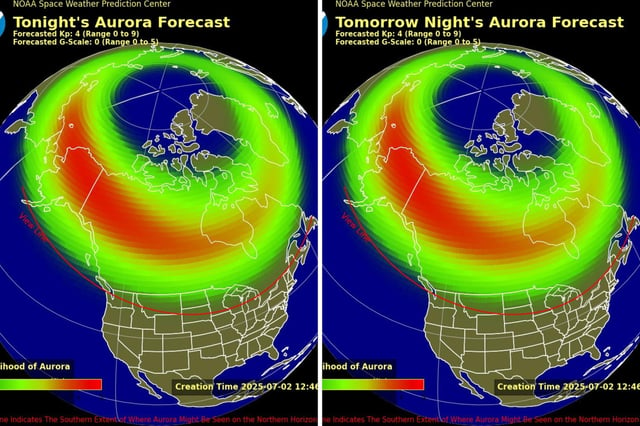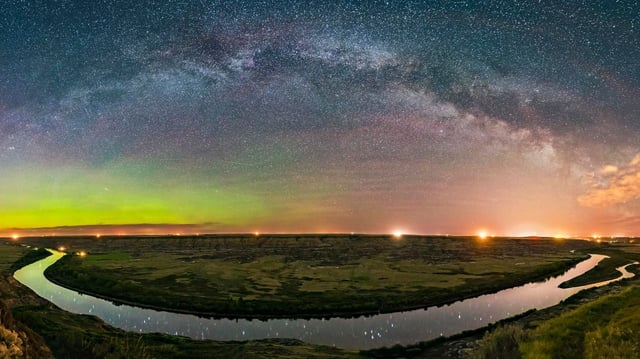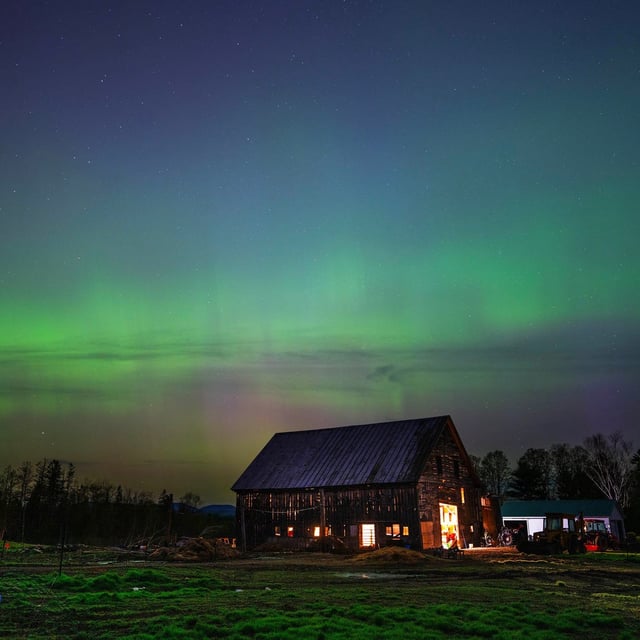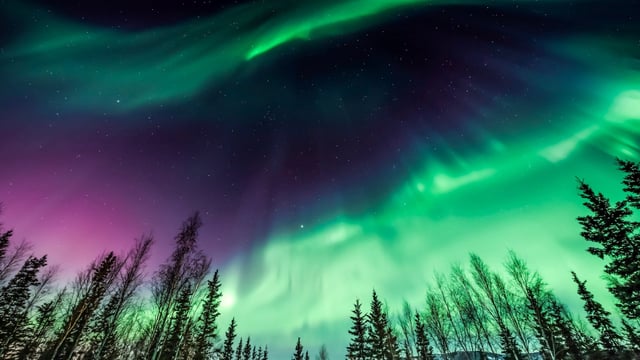Overview
- NOAA’s Space Weather Prediction Center warns of a G1 (minor) geomagnetic storm through July 2–3 driven by the June 28 solar eruption.
- The storm’s Kp index may reach 5, signaling moderate auroral intensity along the northern horizon.
- Aurora viewlines map indicates 14 northern U.S. states—from Washington through Maine—could catch glimpses of the northern lights.
- Best viewing falls between 10 p.m. and 2 a.m. local time under clear, dark skies despite moonlight and lingering twilight.
- Observing conditions include minimal light pollution and cloud cover, and the Milky Way’s bright core will be visible in the southern sky at the same time.



